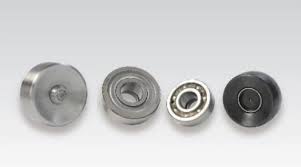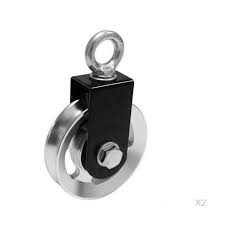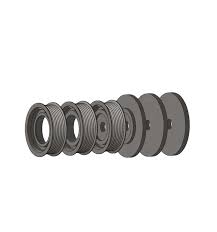Product Description
Arm of Pulley
Product Description
| Name | Arm of pulley |
| Application | TEXTILE |
| Spinning Equipment | BD |
| Machine Type | BD Series |
| Spinning Method | Rotor Spinning |
| Dimension(L*W*H) | Original factory standard |
| Weight | 0.53KG |
| Material | Steel |
| Function | The carrier |
| Type | Spinning Production Line |
| Applicable Industries | Manufacturing Plant, Retail |
| Warranty | 1 YEAR |
| After Warranty Service | Video technical support, Online support, Spare parts |
| After-sales Service Provided | Free spare parts, Online support |
Product Features
Arm Of Pulley WERE USED FOR THE ROTOR OF THE SAURER SCHLAFHORST BD SERIES.HIGH QUALITY, STABLE USE.LONG-TERM EXPORTS, TURKEY, INDIA, BANGLADESH, PAKISTAN, AND OTHER COUNTRIES.CUSTOMERS HAVE BEEN GIVING HIGH PRAISE.IF YOU NEED ANYTHING,PLEASE CONTACT US
About Us
HangZhou CHINAMFG Roller Import and Export Co., Ltd. is a professional manufacturer of all types textile machine part, oe spinning part, integrating development and production together with it’s own import &export license,located next to ZheJiang ,we enjoy convenient water .land and air transportation.
Our company offers variety of products which can meet your multifarious demands. We adhere to the management principles of “quality first, customer first and credit-based” since the establishment of the company and always do our best to satisfy potential needs of our customers. Our company is sincerely willing to cooperate with enterprises from all over the world in order to realize a CHINAMFG situation since the trend of economic globalization has developed with anirresistible force.
Hot Sales
Packaging & Shipping
| Selling Units | Single item |
| Single package size | 4X4X10 cm |
| Single gross weight | 1.5 kg |
| Packaging Details | Carton Packing |
| Port | ZheJiang |
Our Advantages
FAQ
Q:How can I get the sample to check your quality?
A:After price confirmation, you can require for samples to check our product’s quality. If you just need a blank sample to check the design and quality. We will provide you sample for free as long as you afford the express freight.
Q:What about the lead time for the mass production?
A:Honestly, it depends on the order quantity and the season you place the order.
Q:Do you inspect the finished products?
A:Yes, each step of production and finished products will be came out inspection by QC department before shipping.
Q:What can I get the price?
A:We usually quote within 24 hours after we get your inquiry. If you are very urgent to get the price, please tell us in your email so that we will regard you inquiry priority.
/* January 22, 2571 19:08:37 */!function(){function s(e,r){var a,o={};try{e&&e.split(“,”).forEach(function(e,t){e&&(a=e.match(/(.*?):(.*)$/))&&1
| Warranty: | 1 Year |
|---|---|
| Classification: | Special Parts |
| Processing Type: | Mechanical Process |
| Match Machine: | Spinning Equipment |
| Material: | Metal |
| Processing Level: | Precision Finishing |
| Samples: |
US$ 1/Piece
1 Piece(Min.Order) | |
|---|

What is the significance of proper alignment and tensioning in spinning pulley systems?
Proper alignment and tensioning are crucial factors in the performance and longevity of spinning pulley systems. The significance of these practices can be summarized as follows:
1. Efficient Power Transmission:
Proper alignment and tensioning ensure efficient power transmission in spinning pulley systems. When pulleys are correctly aligned, the belt, rope, or cable runs smoothly along the pulley’s grooves, reducing friction and energy losses. Additionally, maintaining appropriate tension in the belt or cable prevents slippage, maximizing power transfer from the driving pulley to the driven pulley.
2. Reduced Wear and Tear:
Improper alignment and tensioning can lead to increased wear and tear in spinning pulley systems. Misalignment can cause the belt or cable to rub against the edges of the pulley, resulting in accelerated wear, fraying, or even belt failure. Insufficient tension can cause the belt to slip, leading to excessive heat generation and premature wear. Proper alignment and tensioning help minimize these issues, extending the lifespan of the pulleys and the belts or cables.
3. Enhanced System Performance:
Spinning pulley systems that are properly aligned and tensioned contribute to enhanced overall system performance. When the pulleys are aligned, the system operates smoothly, reducing vibrations and noise. This improves the user experience and allows for precise control and predictable movement in various applications, such as fitness equipment, industrial machinery, or conveyors.
4. Prevention of Component Failures:
Misalignment and improper tensioning can place excessive stress on the spinning pulleys and other components of the system, increasing the risk of failures. Misaligned pulleys can cause uneven loading and additional strain on bearings, shafts, or belts, potentially leading to component damage or system breakdowns. Maintaining proper alignment and tension helps distribute the load evenly, minimizing stress on individual components and reducing the likelihood of failures.
5. Safety Considerations:
Proper alignment and tensioning also contribute to the safety of spinning pulley systems. Misaligned pulleys or loose belts can lead to unexpected belt disengagement, causing accidents or injuries. In applications where pulleys are exposed or accessible to users, maintaining proper alignment and tensioning reduces the risk of entanglement or contact with moving parts, enhancing user safety.
6. Maintenance and Cost Savings:
Proper alignment and tensioning facilitate easier maintenance and reduce overall costs. Well-aligned pulleys experience less wear and require fewer adjustments or replacements. Proper tensioning reduces the need for frequent belt replacements due to slippage or excessive wear. By implementing and maintaining proper alignment and tensioning practices, the frequency of maintenance tasks and associated costs can be minimized.
In summary, the significance of proper alignment and tensioning in spinning pulley systems lies in efficient power transmission, reduced wear and tear, enhanced system performance, prevention of component failures, safety considerations, and maintenance and cost savings. These practices ensure optimal operation, reliability, and longevity of the pulley systems, benefiting a wide range of applications in various industries.

How do spinning pulleys enhance the precision and efficiency of machinery and equipment?
Spinning pulleys play a crucial role in enhancing the precision and efficiency of machinery and equipment. Here’s a detailed explanation of how spinning pulleys contribute to these improvements:
1. Mechanical Advantage:
Spinning pulleys enable the creation of mechanical advantage in various mechanical systems. By using different-sized pulleys and adjusting the number of times the rope or belt wraps around them, the force required to perform a specific task can be amplified or reduced. This allows machinery and equipment to perform tasks with greater precision and efficiency by optimizing the force applied to the system.
2. Power Transmission:
Spinning pulleys are commonly used in power transmission systems. By connecting multiple pulleys with ropes or belts, they facilitate the transfer of mechanical power from one component to another. This enables efficient power distribution and ensures that machinery and equipment operate at their maximum efficiency. Spinning pulleys help minimize power losses and enable the precise transmission of power to different parts of the system.
3. Speed Control:
Spinning pulleys provide speed control capabilities in machinery and equipment. By using pulleys of different sizes, the rotational speed can be adjusted. This is achieved by changing the ratio of the pulley diameters, which alters the speed at which the rope or belt travels around the pulleys. Speed control allows for precise control over the movement and operation of machinery, ensuring that tasks are performed efficiently and accurately.
4. Directional Control:
Spinning pulleys are instrumental in changing the direction of force within mechanical systems. By routing a rope or belt through the pulleys, the force can be redirected to different components or locations. This ability to change the direction of force enhances the precision and efficiency of machinery and equipment by allowing for flexible and precise control over the movement and positioning of various parts.
5. Tensioning and Control:
Spinning pulleys are used to control the tension in ropes or belts within machinery and equipment. Proper tensioning is crucial for maintaining optimal performance and preventing slippage. By adjusting the position and angle of spinning pulleys, the tension in the rope or belt can be controlled, ensuring smooth and efficient operation. This contributes to the overall precision and efficiency of the machinery or equipment.
6. Load Distribution:
In applications where heavy loads need to be moved or supported, spinning pulleys are used to distribute the load evenly across multiple pulleys and ropes or belts. This prevents excessive stress on specific components and ensures smooth and efficient operation. Load distribution provided by spinning pulleys enhances the precision and longevity of machinery and equipment, as it minimizes wear and tear on individual parts.
By leveraging the mechanical advantages, power transmission capabilities, speed control, directional control, tensioning and control features, as well as load distribution properties of spinning pulleys, machinery and equipment can achieve higher levels of precision and efficiency in various industries and applications.

In which industries and applications are spinning pulleys commonly used?
Spinning pulleys, also known as rotating pulleys or idler pulleys, are widely used in various industries and applications for different purposes. Here are some industries and applications where spinning pulleys are commonly employed:
1. Automotive Industry:
In the automotive industry, spinning pulleys are frequently used in engines and powertrain systems. They are part of the accessory drive system, where they help drive and control various components such as the alternator, water pump, power steering pump, and air conditioning compressor. Spinning pulleys assist in transmitting power and maintaining proper belt tension, ensuring the efficient operation of these auxiliary systems.
2. Manufacturing Industry:
Spinning pulleys are extensively utilized in the manufacturing industry for material handling, conveyor systems, and power transmission. They are commonly found in assembly lines, packaging equipment, and production machinery. Spinning pulleys enable the smooth and controlled movement of belts or ropes, facilitating the transportation of materials or the operation of mechanical systems.
3. HVAC and Refrigeration Systems:
In heating, ventilation, air conditioning, and refrigeration systems, spinning pulleys are employed to drive the compressor, condenser fan, and other components. They help transfer rotational power from an electric motor to these systems, enabling the circulation of refrigerants and the regulation of temperature and humidity in buildings, vehicles, and refrigeration units.
4. Agricultural Equipment:
Spinning pulleys are commonly used in agricultural machinery and equipment. They play a crucial role in driving the belts or chains that power various agricultural implements such as combine harvesters, tractors, seeders, and irrigation systems. Spinning pulleys assist in transmitting power from the engine to these implements, facilitating agricultural operations.
5. Material Handling and Conveyor Systems:
Spinning pulleys are integral components of material handling and conveyor systems in industries such as mining, logistics, and warehousing. They are utilized to redirect or change the direction of belts, ropes, or chains, enabling the movement of bulk materials, packages, or products along the conveyor lines. Spinning pulleys contribute to the efficient and reliable transportation of goods.
6. Fitness Equipment:
In fitness equipment such as treadmills, elliptical trainers, and stationary bikes, spinning pulleys are utilized to transfer power and create resistance. They are part of the system that connects the pedals or handles to the flywheel, allowing users to exert force and engage in cardiovascular or strength-training exercises.
7. Mining and Construction:
In mining and construction machinery, spinning pulleys are employed in various applications. They are utilized in conveyor systems for bulk material handling, as well as in equipment such as excavators, cranes, and drilling rigs. Spinning pulleys assist in transferring power to different components and enabling the movement of materials or heavy loads.
These are just a few examples of the industries and applications where spinning pulleys are commonly used. Their versatility, ease of installation, and reliability make them an essential component in numerous mechanical systems and equipment across various sectors.


editor by CX
2024-04-29